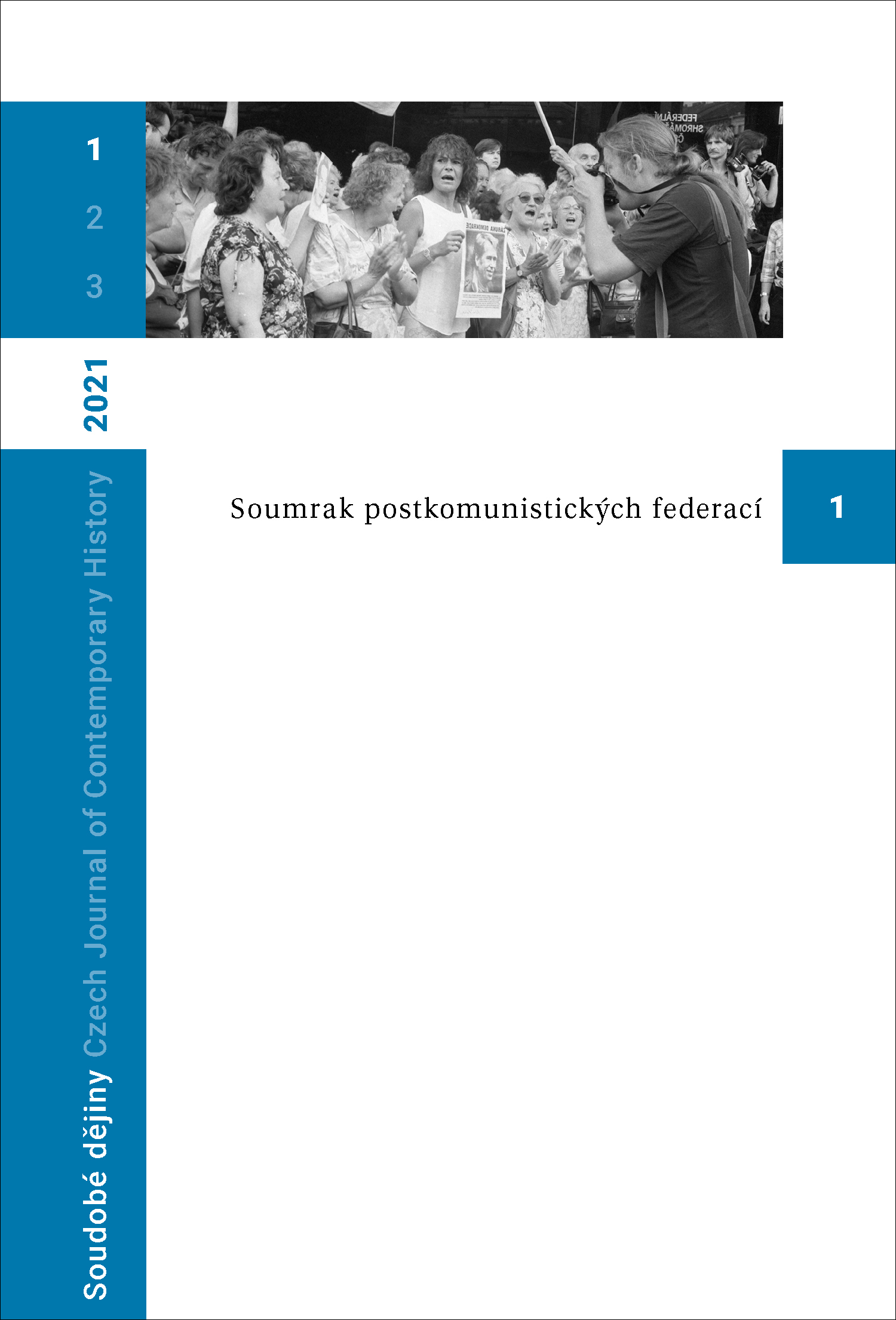Skrytá prostorovost československé federace
The Hidden Spacial Nature of the Czechoslovak Federation
Role of the National Councils in 1989–1992 Transformations
Author(s): Adéla Gjuričová, Tomáš ZahradníčekSubject(s): Politics / Political Sciences, History, Political history, Transformation Period (1990 - 2010), Post-Communist Transformation
Published by: AV ČR - Akademie věd České republiky - Ústav pro soudobé dějiny
Keywords: Czechoslovakia;Parliament;Czech National Council;Slovak National Council;federalism;democratic transition;Slovak constitution;Czech foreign policy;disintegration of Czechoslovakia
Summary/Abstract: The study examines the role of the Czech National Council and the Slovak National Council in the political development of the Czechoslovak federation. It presents the two republic parliaments as hitherto overlooked institutions, where significant processes toward their transformation into parliaments of independent states – the Czech Republic and the Slovak Republic – were taking place. It emphasizes that the formally identical status of both National Councils was hiding different realities, practices and evolutionary dynamisms of the two bodies, which were a result of a not very fortunately chosen institutional architecture of the federation. Prague’s twin role as both federal and Czech capital made the Czech National Council act as a regional authority, while its Slovak counterpart in Bratislava was playing a key role in Slovakia’s political life. The two authors illustrate the situation using two documentary probes. The first of them concerns the Slovak struggle for their own constitution promised to both republics in the new constitutional order in 1968. It shows that a majority of the Slovak National Council adopted a requirement for an autonomous constitution as early as in the first weeks after the fall of the last Communist government and kept insisting on it until the end of the federation. The second probe into documentary sources indicates a different dynamism; it presents the formation of nuclei of the Czech foreign policy through the Foreign Committee of the Czech National Council, the body established only in the spring of 1991, which subsequently became one of the institutional pillars of Czech separatism in the next year and a half.
Journal: Soudobé Dějiny
- Issue Year: XXVIII/2021
- Issue No: 1
- Page Range: 23-43
- Page Count: 21
- Language: Czech

